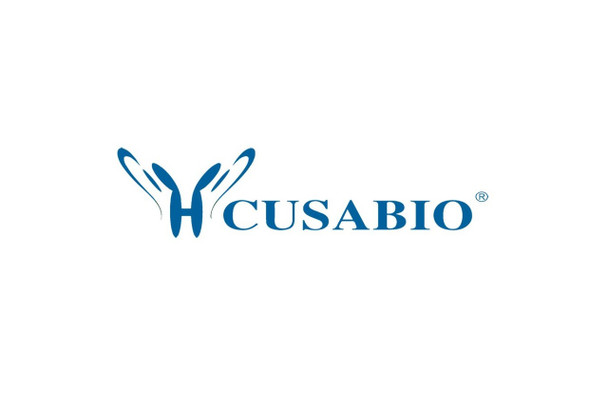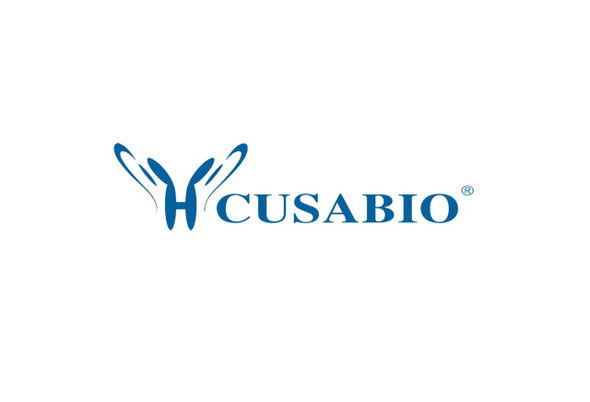Cusabio Mouse Recombinants
Recombinant Mouse Transcription factor AP-2-alpha (Tfap2a) | CSB-EP023414MO
- SKU:
- CSB-EP023414MO
- Availability:
- 13 - 23 Working Days
Description
Recombinant Mouse Transcription factor AP-2-alpha (Tfap2a) | CSB-EP023414MO | Cusabio
Alternative Name(s): AP-2 transcription factor (Activating enhancer-binding protein 2-alpha) (Activator protein 2) (AP-2) (Ap2tf) (Tcfap2a)
Gene Names: Tfap2a
Research Areas: Epigenetics and Nuclear Signaling
Organism: Mus musculus (Mouse)
AA Sequence: MLWKLTDNIKYEDCEDRHDGTSNGTARLPQLGTVGQSPYTSAPPLSHTPNADFQPPYFPPPYQPIYPQSQDPYSHVNDPYSLNPLHAQPQPQHPGWPGQRQSQESGLLHTHRGLPHQLSGLDPRRDYRRHEDLLHGPHALGSGLGDLPIHSLPHAIEDVPHVEDPGINIPDQTVIKKGPVSLSKSNSNAVSAIPINKDNLFGGVVNPNEVFCSVPGRLSLLSSTSKYKVTVAEVQRRLSPPECLNASLLGGVLRRAKSKNGGRSLREKLDKIGLNLPAGRRKAANVTLLTSLVEGEAVHLARDFGYVCETEFPAKAVAEFLNRQHSDPNEQVARKNMLLATKQICKEFTDLLAQDRSPLGNSRPNPILEPGIQSCLTHFNLISHGFGSPAVCAAVTALQNYLTEALKAMDKMYLSNNPNSHTDNSAKSSDKEEKHRK
Source: E.coli
Tag Info: N-terminal 10xHis-tagged and C-terminal Myc-tagged
Expression Region: 1-437aa
Sequence Info: Full Length
MW: 55.0 kDa
Purity: Greater than 85% as determined by SDS-PAGE.
Relevance: Sequence-specific DNA-binding protein that interacts with inducible viral and cellular enhancer elements to regulate transcription of selected genes. AP-2 factors bind to the consensus sequence 5'-GCCNNNGGC-3' and activate genes involved in a large spectrum of important biological functions including proper eye, face, body wall, limb and neural tube development. They also suppress a number of genes including MCAM/MUC18, C/EBP alpha and MYC. AP-2-alpha is the only AP-2 protein required for early morphogenesis of the lens vesicle. Together with the CITED2 coactivator, stimulates the PITX2 P1 promoter transcription activation. Associates with chromatin to the PITX2 P1 promoter region.
Reference: "Alternative mRNAs encode multiple isoforms of transcription factor AP-2 during murine embryogenesis." Meier P., Koedood M., Philipp J., Fontana A., Mitchell P.J. Dev. Biol. 169:1-14(1995)
Storage: The shelf life is related to many factors, storage state, buffer ingredients, storage temperature and the stability of the protein itself. Generally, the shelf life of liquid form is 6 months at -20?/-80?. The shelf life of lyophilized form is 12 months at -20?/-80?.
Notes: Repeated freezing and thawing is not recommended. Store working aliquots at 4? for up to one week.
Function: Sequence-specific DNA-binding protein that interacts with inducible viral and cellular enhancer elements to regulate transcription of selected genes. AP-2 factors bind to the consensus sequence 5'-GCCNNNGGC-3' and activate genes involved in a large spectrum of important biological functions including proper eye, face, body wall, limb and neural tube development. They also suppress a number of genes including MCAM/MUC18, C/EBP alpha and MYC. AP-2-alpha is the only AP-2 protein required for early morphogenesis of the lens vesicle. Together with the CITED2 coactivator, stimulates the PITX2 P1 promoter transcription activation. Associates with chromatin to the PITX2 P1 promoter region.
Involvement in disease:
Subcellular Location: Nucleus
Protein Families: AP-2 family
Tissue Specificity:
Paythway:
Form: Liquid or Lyophilized powder
Buffer: If the delivery form is liquid, the default storage buffer is Tris/PBS-based buffer, 5%-50% glycerol. If the delivery form is lyophilized powder, the buffer before lyophilization is Tris/PBS-based buffer, 6% Trehalose, pH 8.0.
Reconstitution: We recommend that this vial be briefly centrifuged prior to opening to bring the contents to the bottom. Please reconstitute protein in deionized sterile water to a concentration of 0.1-1.0 mg/mL.We recommend to add 5-50% of glycerol (final concentration) and aliquot for long-term storage at -20?/-80?. Our default final concentration of glycerol is 50%. Customers could use it as reference.
Uniprot ID: P34056
HGNC Database Link: N/A
UniGene Database Link: UniGene
KEGG Database Link: KEGG
STRING Database Link: STRING
OMIM Database Link: N/A









